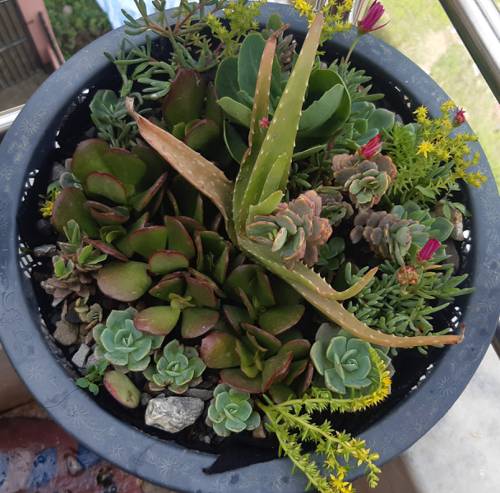
FAQ About Indoor Plant Genetic Diversity Management

What is genetic diversity in indoor plants?
Genetic diversity in indoor plants refers to the variety of genetic characteristics present within a species of plants grown indoors. This diversity results from differences in genetic make-up between individual plants, which can influence their growth, appearance, ability to resist diseases, and adaptability to environmental changes.

Why is genetic diversity important for indoor plants?
Genetic diversity is crucial for indoor plants as it enhances resilience against pests and diseases, increases adaptability to varying environmental conditions, and helps in the preservation of plant species by maintaining their unique traits. Diverse gene pools can also facilitate plant breeding for desirable traits.

How can genetic diversity be increased in indoor plant collections?
Increasing genetic diversity in indoor plant collections can be achieved through several methods, such as introducing new plant species from different geographical regions, cross-breeding plants, and encouraging natural variation through selective cultivation practices that favor diverse genetic traits.

What are the common methods to maintain genetic diversity in plants?
Common methods to maintain genetic diversity include controlled breeding strategies, seed banking, tissue culture techniques, and the conservation of indigenous plant varieties. Each method has its advantages and can be selected based on specific plant types and goals.

What role do seed banks play in genetic diversity management?
Seed banks are vital for genetic diversity management as they store seeds from a wide range of plant species and varieties. This conservation strategy ensures genetic material is preserved and can be reintroduced in the future, aiding in restoration efforts and protecting against losses from catastrophic events.

Can tissue culture be used to manage genetic diversity in indoor plants?
Tissue culture can be an effective tool for managing genetic diversity. By using small tissue samples of plants to grow new plants, tissue culture allows for the mass production of plants with specific genetic traits, ensuring a controlled method to preserve or propagate genetic diversity.

How does cross-breeding help in genetic diversity management?
Cross-breeding involves the deliberate crossing of different plant varieties or species to produce offspring with a combination of traits from the parent plants. This process increases genetic diversity by introducing new genetic combinations, potentially leading to more robust and adaptable plants.

What is the impact of monoculture on genetic diversity?
Monoculture, the cultivation of a single plant species over an extensive area, can significantly reduce genetic diversity. It makes plants more susceptible to diseases and pests and reduces adaptability to environmental changes due to the lack of genetic variability.

Is it possible to identify genetically diverse plants by their appearance?
While certain traits like leaf shape, color, and plant vigor could suggest genetic diversity, it is not always possible to accurately identify genetically diverse plants merely by appearance. Genetic testing and profiling are more reliable methods for assessing genetic diversity.

Are genetically diverse indoor plants better at disease resistance?
Genetically diverse plants tend to have a better ability to resist diseases compared to genetically uniform species. This diversity allows some plants to possess natural resistance to certain pathogens, helping to safeguard the entire plant population from widespread disease outbreaks.

How can I ensure the genetic diversity of my indoor plant collection?
To ensure genetic diversity in your indoor plant collection, regularly introduce new plant species, encourage cross-breeding, and select plants from diverse sources. Additionally, avoid relying heavily on a few species and explore partnerships with botanical gardens or plant nurseries to expand your collection's genetic base.

What are some challenges in maintaining genetic diversity in indoor plants?
Challenges include limited access to diverse genetic material, possible disease transmission with new species introductions, and the need for specialized knowledge and facilities to manage and breed plants effectively. Environmental considerations and ethical concerns about genetic manipulation also pose challenges.

How does climate change affect genetic diversity in indoor plants?
Climate change can impact genetic diversity by altering the suitability of environments for specific plant species, potentially leading to shifts in species composition. Changes in temperature and humidity can stress plants, threatening both the health and genetic stability of indoor plant collections.

Can indoor plant genetic diversity impact human well-being?
Yes, genetically diverse indoor plants can contribute to human well-being by offering aesthetic value, improving air quality, and providing psychological benefits. Diversity ensures longer-lasting and more resilient plant populations that can sustain these benefits over time.

How does selective breeding differ from genetic modification in plant diversity?
Selective breeding involves choosing plants with specific traits to produce offspring with those traits, largely relying on natural genetic variability. Genetic modification involves directly altering a plant's DNA to achieve desired traits, which can introduce traits that don't naturally occur in the plant.

What is the significance of botanical gardens in genetic diversity management?
Botanical gardens play a significant role in preserving plant genetic diversity by maintaining plant collections from diverse ecological regions. They act as reservoirs of genetic material and often participate in research and conservation efforts to propagate diverse plant species and educate the public.

Can indoor plant diversity affect ecosystem services?
Indoor plant diversity can improve ecosystem services like air purification, carbon sequestration, and the provision of habitats for pollinators. Diverse plant species contribute to a robust indoor ecosystem that can more efficiently support these functions, enhancing overall environmental quality indoors.

Is genetic diversity applicable only to exotic indoor plants?
Genetic diversity is important for both exotic and native indoor plants. While exotic plants may offer novel genetic traits, native plants are often better adapted to local conditions and can contribute to resilience within their existing ecosystems, making genetic diversity critical for all types of indoor plants.

How are new plant species introduced to enhance genetic diversity within collections?
New plant species can be introduced through trade with other collectors, botanical exchanges, and purchasing from nurseries that specialize in diverse plant varieties. Care should be taken to assess the risk of diseases and ensure compatibility with existing plant species within the collection.
